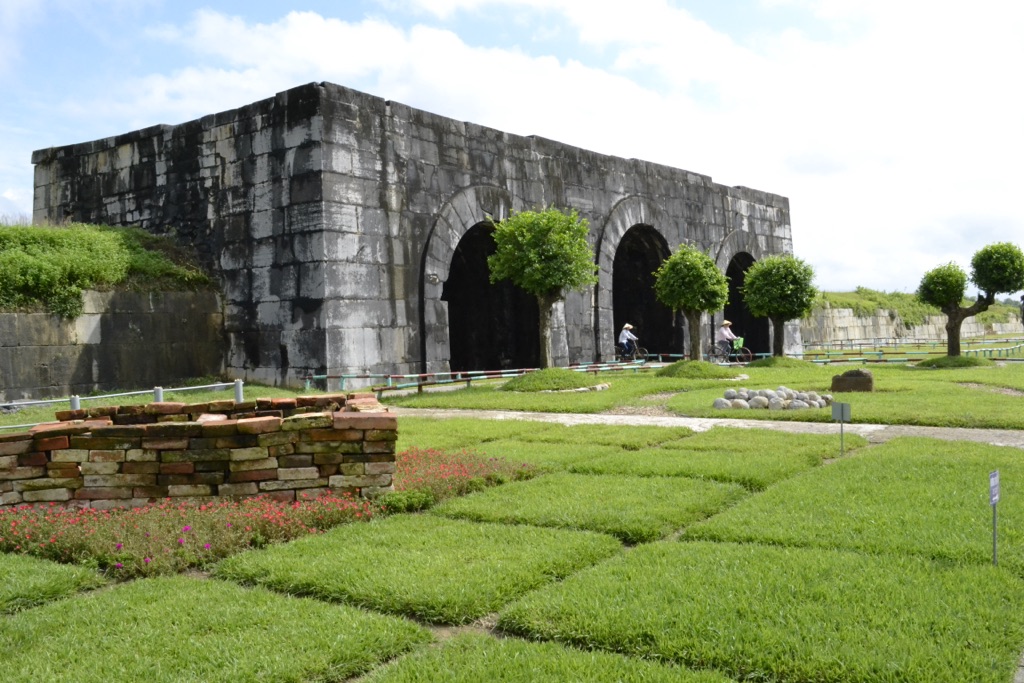The Citadel of the Hồ Dynasty, also known as the Tây Đô castle, is a 14th-century fortress located in Vietnam’s Thanh Hóa Province. It served as the capital of Vietnam from 1398 to 1407 under the Hồ dynasty. This historical site is renowned for its unique stone architecture and impressive construction techniques. In 2011, UNESCO recognized it as a World Heritage site, highlighting its significant value in world history and architecture.
Hồ Dynasty
The Hồ Dynasty, ruling from 1400 to 1407 AD, marks a brief yet significant period in Vietnamese history. This dynasty was established by Hồ Quý Ly, who usurped the throne from the Trần Dynasty, signaling a dramatic shift in the country’s leadership. The Hồ Dynasty is known for its ambitious reforms and the construction of a strong centralized government, aiming to revitalize a state weakened by internal strife and external threats.
Hồ Quý Ly, the founder, was a visionary yet controversial figure. Before becoming emperor, he served as a high-ranking official under the Trần Dynasty, gaining considerable influence and power. In 1400, he dethroned the last Trần emperor and proclaimed himself the first emperor of the Hồ Dynasty. His reign was characterized by significant administrative, military, and educational reforms. He initiated land reforms, redistributed land to peasants, and attempted to break the power of the feudal lords, which was a radical move that faced much opposition.
The Hồ Dynasty’s capital was established in Tây Đô, known today as Thanh Hóa Province. This strategic relocation from the traditional capital of Thăng Long (present-day Hanoi) was intended to consolidate power and better defend against potential invasions. The dynasty is also noted for constructing the Vinh Lăng stele, an important historical artifact that provides insight into its governance and policies.
Religion during the Hồ Dynasty continued to be a blend of Buddhism, Confucianism, and Taoism, reflecting the diverse spiritual landscape of Vietnam. Buddhism, in particular, received royal patronage, continuing the tradition of previous dynasties. However, Hồ Quý Ly also promoted Confucianism in his efforts to strengthen state bureaucracy and governance, emphasizing moral integrity and the welfare of the people.
Social and daily life in the Hồ Dynasty would have been influenced by the dynasty’s reforms. The land redistribution efforts aimed to improve the livelihood of peasants, potentially altering the social fabric. The emphasis on education and meritocracy in government appointments could have fostered a more equitable society, at least in theory. However, the dynasty’s short span and the turmoil that accompanied its rise and fall meant that these reforms had limited time to take root.
The Hồ Dynasty’s downfall came swiftly, as it faced both internal opposition and external threats. The most significant challenge came from the Ming Dynasty of China. In 1406, the Ming launched a military campaign against Vietnam, marking the beginning of a devastating war. By 1407, the Hồ Dynasty was overthrown, and Vietnam was placed under Chinese rule for the next two decades, until the rise of the Lê Dynasty.
The rulers of the Hồ Dynasty, primarily Hồ Quý Ly and his son Hồ Hán Thương, faced immense challenges during their brief reigns. Their ambitious reforms and the subsequent resistance, both from within the country and from the Ming Dynasty, highlight the turbulent period of Vietnam’s history under their rule. Despite its short duration, the Hồ Dynasty’s efforts to transform Vietnamese society and governance left an indelible mark on the nation’s historical narrative.
The Hồ Dynasty’s legacy is a complex one, characterized by ambitious reforms, significant cultural contributions, and the eventual tragedy of its swift downfall. Its attempt to forge a strong, centralized state and promote social equity, though ultimately unsuccessful, reflects a pivotal moment in Vietnam’s long and storied history.

